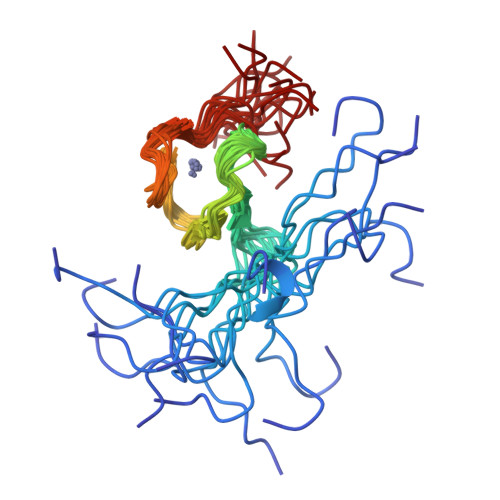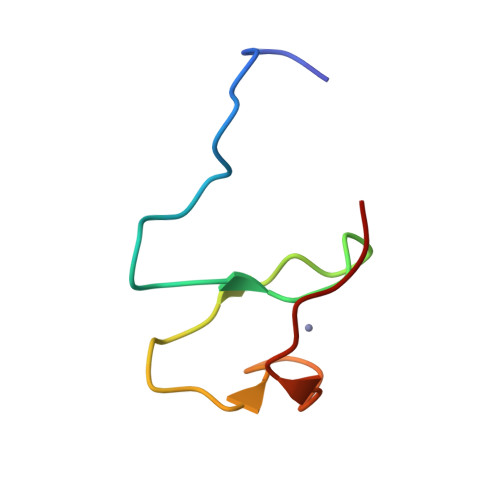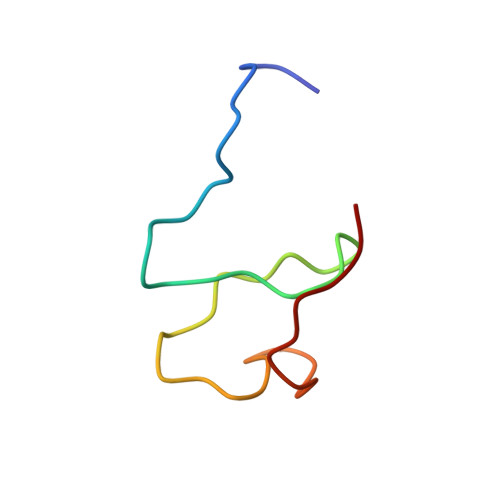The structure of the zinc finger domain from human splicing factor ZNF265 fold
Plambeck, C.A., Kwan, A.H.Y., Adams, D.J., Westman, B.J., van der Weyden, L., Medcalf, R.L., Morris, B.J., Mackay, J.P.(2003) J Biological Chem 278: 22805-22811
- PubMed: 12657633
- DOI: https://doi.org/10.1074/jbc.M301896200
- Primary Citation of Related Structures:
1N0Z - PubMed Abstract:
Identification of the protein domains that are responsible for RNA recognition has lagged behind the characterization of protein-DNA interactions. However, it is now becoming clear that a range of structural motifs bind to RNA and their structures and molecular mechanisms of action are beginning to be elucidated. In this report, we have expressed and purified one of the two putative RNA-binding domains from ZNF265, a protein that has been shown to bind to the spliceosomal components U1-70K and U2AF35 and to direct alternative splicing. We show that this domain, which contains four highly conserved cysteine residues, forms a stable, monomeric structure upon the addition of 1 molar eq of Zn(II). Determination of the solution structure of this domain reveals a conformation comprising two stacked beta-hairpins oriented at approximately 80 degrees to each other and sandwiching the zinc ion; the fold resembles the zinc ribbon class of zinc-binding domains, although with one less beta-strand than most members of the class. Analysis of the structure reveals a striking resemblance to known RNA-binding motifs in terms of the distribution of key surface residues responsible for making RNA contacts, despite a complete lack of structural homology. Furthermore, we have used an RNA gel shift assay to demonstrate that a single crossed finger domain from ZNF265 is capable of binding to an RNA message. Taken together, these results define a new RNA-binding motif and should provide insight into the functions of the >100 uncharacterized proteins in the sequence data bases that contain this domain.
Organizational Affiliation:
Basic and Clinical Genomics Laboratory, School of Medical Science, University of Sydney, New South Wales 2006, Australia.



















